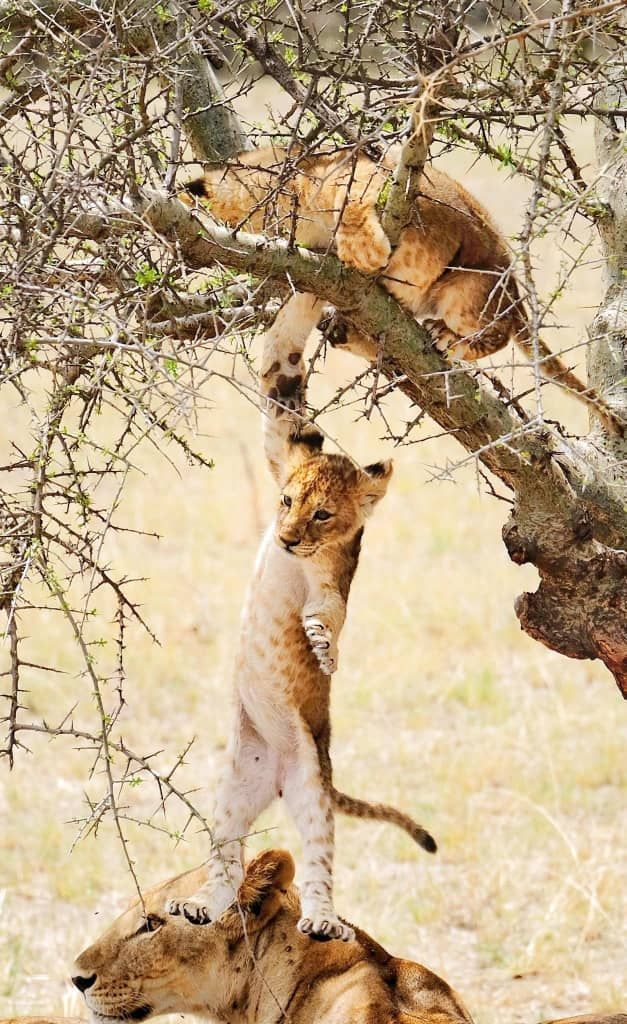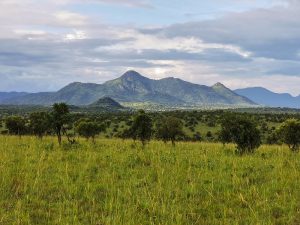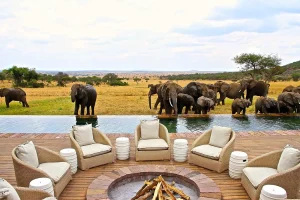The Hidden Wildlife Gems of East Africa: Uncovering Nature’s Best-Kept Secrets
When people think of East Africa, iconic destinations like the Maasai Mara, Serengeti, and Ngorongoro Crater often come to mind. While these world-renowned parks and reserves undoubtedly offer spectacular wildlife experiences, there are lesser-known gems scattered across the region that are just as remarkable. These hidden wildlife gems offer more intimate, off-the-beaten-path experiences, where nature thrives away from the crowds. If you’re a wildlife enthusiast looking for a more unique and tranquil safari experience, East Africa’s lesser-explored areas are waiting to be discovered. Hidden Wildlife Gems of East Africa
In this guide, we’ll uncover some of the best hidden wildlife gems in East Africa, offering you a chance to witness nature in its purest form.
1. Rwenzori Mountains National Park, Uganda
Often overshadowed by Uganda’s more famous wildlife areas like Bwindi Impenetrable Forest, the Rwenzori Mountains National Park offers a unique blend of rugged mountains, tropical rainforests, and stunning alpine vegetation. It is a haven for those looking to explore a different side of East Africa’s biodiversity.
Why Visit?
- Endemic Species: The Rwenzori Mountains are home to unique species like the Rwenzori chimpanzee, a subspecies found only in this region. Other animals include the Giant Forest Hog, Mountain Gorilla, and the Golden Monkey, making it an incredible destination for wildlife enthusiasts and hikers.
- Birdwatching: With over 200 bird species, including the Rwenzori Turaco, the park is a birdwatching paradise.
- Hiking & Trekking: Rwenzori’s famous trekking routes through its lush, misty forests offer a chance to encounter wildlife while hiking in the shadow of snow-capped peaks.
Best Time to Visit:
The dry season (June to September) is the best time to hike and explore the park, although the misty and lush landscape is also stunning during the rainy season.
2. Selous Game Reserve, Tanzania
Located in southern Tanzania, the Selous Game Reserve is one of Africa’s largest and least-visited game reserves. It offers a unique safari experience, far away from the crowds of the more famous parks. The reserve is rich in wildlife, diverse habitats, and a sense of untouched wilderness.
Why Visit?
- Diverse Ecosystems: Selous is home to savannahs, woodlands, wetlands, and dense forests, making it a great location to spot a wide variety of wildlife. Elephants, lions, buffalo, and giraffes are frequently seen.
- River Safaris: The Rufiji River runs through Selous, providing an exceptional opportunity to take boat safaris to view crocodiles, hippos, and a wide array of birdlife.
- Unspoiled Wilderness: With fewer tourists, the reserve offers a more exclusive safari experience, allowing visitors to get closer to nature.
- Walking Safaris: Guided walking safaris in Selous give travelers the chance to experience wildlife at ground level, providing a more immersive encounter with nature.
Best Time to Visit:
The dry season (June to October) is ideal for game viewing, as animals congregate around water sources, making them easier to spot.
3. Kidepo Valley National Park, Uganda
Kidepo Valley National Park, located in the northeastern corner of Uganda, is a hidden gem that is often overlooked in favor of the more famous parks. However, it offers an exceptional safari experience with stunning views, unique wildlife, and the sense of being in one of East Africa’s most remote, untouched regions.
Why Visit?
- Remote Location: Kidepo is one of Uganda’s most remote national parks, offering a tranquil escape from the crowds. It feels like an untouched Eden, far away from the usual tourist paths.
- Incredible Wildlife: The park is home to a variety of rare and endangered species, including the Cheetah, Bat-eared Fox, African Wild Dog, and Caracal. Other wildlife includes elephants, lions, giraffes, zebras, and buffalo.
- Scenic Views: The park’s landscape is a mix of savannahs, mountains, and valleys, providing breathtaking views and incredible photo opportunities.
- Birdwatching: Over 475 bird species call Kidepo home, making it a paradise for birdwatchers.
Best Time to Visit:
The dry season (December to February) is the best time to visit Kidepo for game viewing, with animals gathering around the few remaining waterholes.
4. Mkomazi National Park, Tanzania
Mkomazi National Park, located in northeastern Tanzania near the Kenya border, is a lesser-known park that offers a rare, off-the-beaten-path safari experience. It’s particularly famous for its rhino conservation efforts and its stunning landscapes of rugged hills and open savannahs.
Why Visit?
- Rhino Conservation: Mkomazi is one of the best places to see the endangered black rhino in East Africa. The park has a successful rhino reintroduction program, which helps protect this critically endangered species.
- Desert Wildlife: Mkomazi’s arid landscape is home to unique desert species like the Gerenuk, Oryx, and Grant’s Gazelle, along with more traditional safari animals such as lions, giraffes, and elephants.
- Birdwatching: With more than 400 species of birds, Mkomazi is also a great destination for birdwatchers.
- Remote Wilderness: Mkomazi is relatively quiet compared to other parks, offering a more tranquil and exclusive safari experience.
Best Time to Visit:
The dry season (June to October) is the best time to visit Mkomazi, as wildlife is more concentrated around water sources.
5. Lake Nakuru National Park, Kenya
Although it is relatively well-known for its flamingos, Lake Nakuru National Park in Kenya is often overshadowed by the more famous Maasai Mara and Amboseli. However, this smaller park offers a stunning array of wildlife and is a hidden gem for those seeking an intimate safari experience.
Why Visit?
- Flamingos: Lake Nakuru is home to one of the largest populations of flamingos in the world. The sight of thousands of flamingos covering the lake is truly mesmerizing, although the number of flamingos fluctuates due to environmental changes.
- White and Black Rhinos: The park is home to both white and black rhinos, offering a chance to see these critically endangered animals up close in their natural habitat.
- Rich Wildlife: In addition to rhinos, the park is home to giraffes, zebras, lions, leopards, and a wide variety of bird species.
- Beautiful Scenery: Surrounded by lush forests, grassy plains, and stunning viewpoints overlooking the lake, the park offers a beautiful landscape to explore.
Best Time to Visit:
The dry season (June to September) is ideal for game viewing, while the rainy season (April to May) is the best time to see flamingos, as they flock to the lake during these months.
6. Aberdare National Park, Kenya
Located in central Kenya, Aberdare National Park is a lush, mountainous region known for its dense forests, waterfalls, and unique wildlife. It’s an off-the-beaten-path destination that offers an exceptional wildlife experience, especially for those looking for a more serene and less commercialized safari.
Why Visit?
- Unique Wildlife: Aberdare is home to rare species such as the Bongo (a type of antelope), Mountain Bongos, Giant Forest Hogs, and various primates, including the Black-and-white Colobus Monkey.
- Scenic Landscapes: The park is famous for its mist-covered mountains, deep ravines, and stunning waterfalls, creating a magical atmosphere for visitors.
- High Altitude: At an altitude of 2,000 to 4,000 meters, the park offers a cool and refreshing escape from the heat of the lowlands.
- Watering Holes: Aberdare has several lodges located near watering holes, offering the opportunity to watch wildlife such as elephants, buffalo, and lions up close.
Best Time to Visit:
The dry season (June to September) is the best time for game viewing, although the park’s lush greenery makes it a beautiful destination year-round.
Conclusion
East Africa is often celebrated for its iconic wildlife destinations, but its hidden gems offer equally extraordinary wildlife experiences in more tranquil, untouched settings. From the misty forests of the Rwenzori Mountains to the vast, remote plains of Kidepo, these lesser-known parks and reserves offer a chance to discover East Africa’s diverse ecosystems and rare species in a more intimate and unspoiled environment.
Whether you’re seeking adventure, solitude, or simply the chance to witness nature’s wonders in their purest form, these hidden wildlife gems are sure to leave you with lasting memories of an unforgettable safari.




